Demolition Contractors Littleport
Find the best Demolition Experts in Littleport
Get 3 FREE Building Demolition quotes for your project today! Compare profiles, reviews, accreditations, portfolio, etc... and choose the best deal.
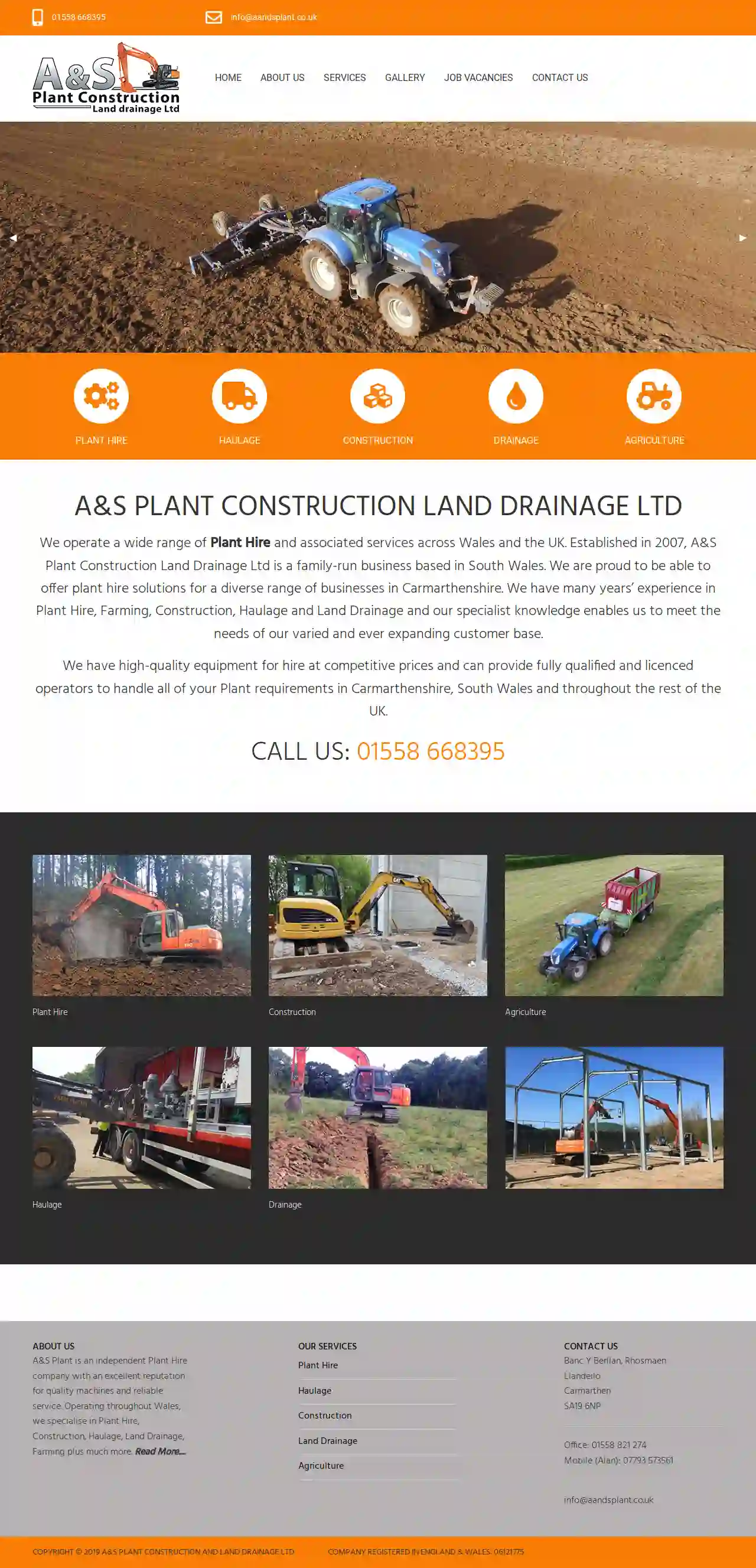
A&S PLANT CONSTRUCTION LAND DRAINAGE LTD
51 reviewsBanc Y Berllan, RhosmaenLlandeiloCarmarthenshire, Llandeilo, SA19 6NP, GBA&S Plant Construction Land Drainage Ltd A&S Plant is an independent Plant Hire company with an excellent reputation for quality machines and reliable service. Operating throughout Wales, we specialise in Plant Hire, Construction, Haulage, Land Drainage, Farming plus much more. Established in 2007, A&S Plant Construction Land Drainage Ltd is a family-run business based in South Wales. We are proud to be able to offer plant hire solutions for a diverse range of businesses in Carmarthenshire. We have many years’ experience in Plant Hire, Farming, Construction, Haulage and Land Drainage and our specialist knowledge enables us to meet the needs of our varied and ever expanding customer base. We have high-quality equipment for hire at competitive prices and can provide fully qualified and licenced operators to handle all of your Plant requirements in Carmarthenshire, South Wales and throughout the rest of the UK. The business is built on our solid reputation for providing high quality Plant and reliable, trustworthy operators at highly competitive prices. Our base is in Llanarthney, Carmarthenshire from where we cover South and Mid Wales We offer a wide range of Operated and Self Drive Plant in South & Mid Wales. From our base in Carmarthenshire we can supply plant and equipment to all locations in South Wales & Mid Wales. We always give the best service at competitive prices. A&S Plant have a highly skilled, well trained and experienced workforce. We have unrivalled expertise in meeting our customer's diverse requirements and demands. A&S Plant provide plant and equipment hire services you can rely on.
- Services
- Why Us?
- Gallery
Get Quote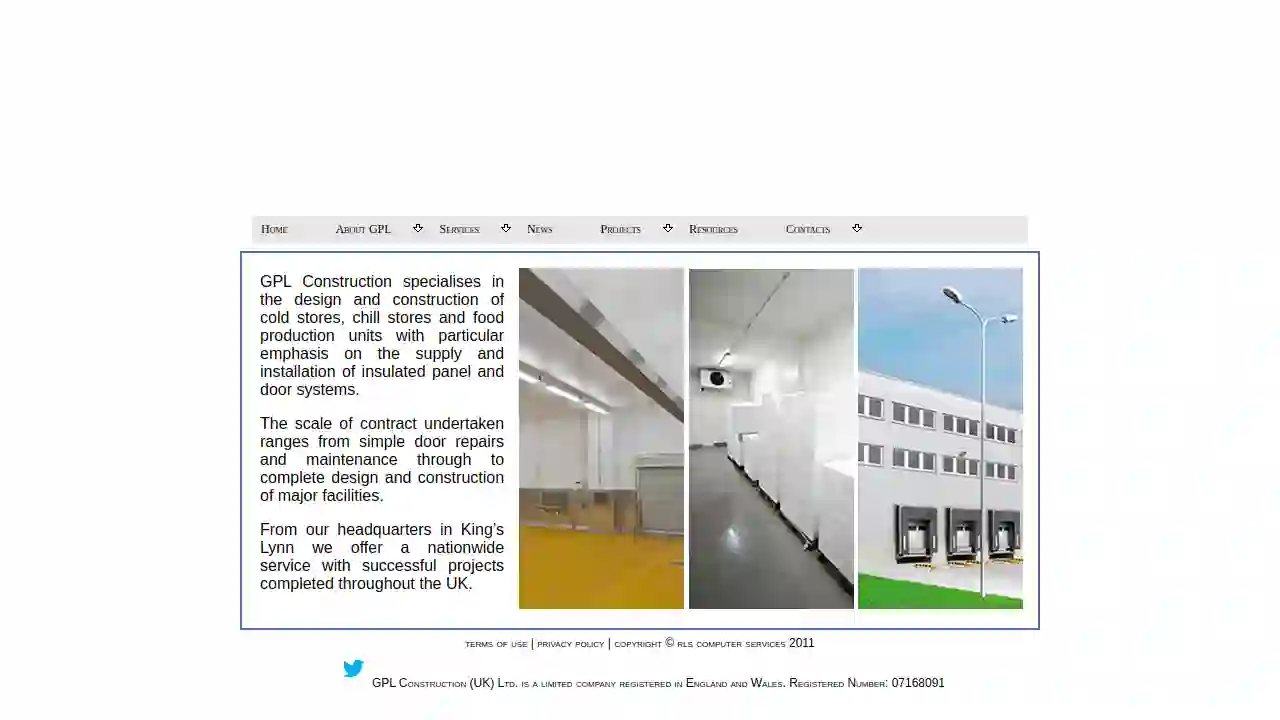
G P L Construction (UK) Ltd
51 reviews18 Hodgson Way, Hardwick Narrows, Kings Lynn, Norfolk, King's Lynn, PE30 4WR, GBGPL Construction: Your Trusted Partner for Cold Storage Solutions GPL Construction (UK) Ltd is a family-run business with over 22 years of experience in the design and construction of cold stores, chill stores, and food production units. We are firmly established as one of the UK's leading performers in our market, offering a nationwide service with a commitment to delivering quality projects on time, within budget, and with minimal disruption to our clients' existing operations. Our team of experienced, multi-skilled operatives share a common vision and commitment to delivering the highest standards. We pride ourselves on our exceptional customer service, reliability, and quality of work, ensuring that each project receives the same high level of attention, whether it's a simple repair or a large-scale design and build project. From our headquarters in King's Lynn, Norfolk, we have successfully completed projects throughout the UK, ranging from simple door repairs and maintenance to the complete design and construction of major facilities. We specialize in the supply and installation of insulated panel and door systems, and we are well-placed to select the best materials for individual contracts without being tied to a specific product range. Our commitment to continuous improvement is reflected in our regular review of health and safety policies and our ongoing training programs. We are an approved contractor under the SafeContractor Scheme, which assesses the health and safety competency of suppliers and their service providers. This accreditation is recognized by many large organizations as their primary means of selecting contractors. We are a progressive company and welcome the opportunity to talk to people who can offer GPL their wealth of experience, are well qualified, and pride themselves on having good standards of work.
- Services
- Why Us?
- Accreditations
- Our Team
- Gallery
Get Quote
Matthews (Sussex) Ltd
4.511 reviewsStephenson Place, Stephenson Way, Stephenson Place Stephenson Way Three Bridges Crawley West Sussex, Crawley, RH10 1TL, GBContact Us Get in touch with Matthews Group today. We're always happy to answer your questions and discuss your project needs. Our Address Stephenson Place Stephenson Way Three Bridges Crawley West Sussex RH10 1TL Phone 01293 617014 Email [email protected]
- Services
- Why Us?
- Gallery
Get Quote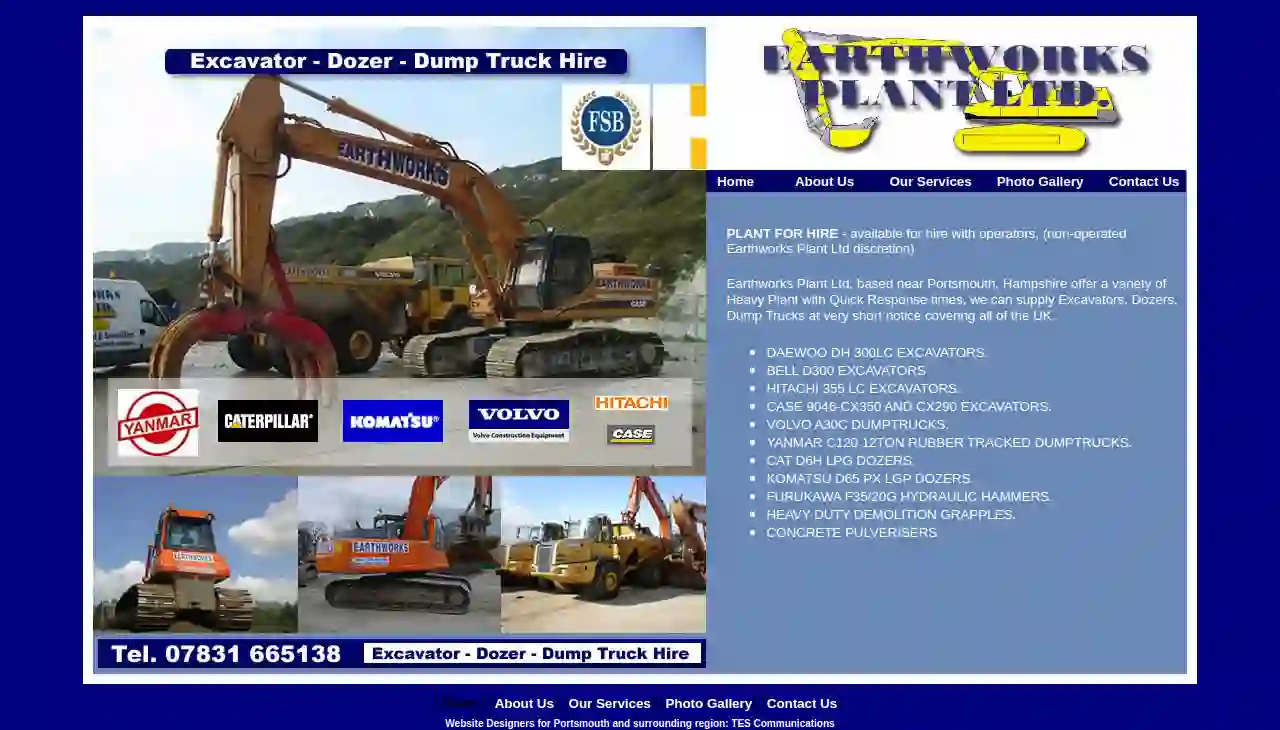
Earth Works Plant Ltd
51 reviewsUnit 13 Spurlings Ind Est., Spurlings RdWallingtonFarehamHampshire, Unit 13 Spurlings Ind Est.Spurlings RdWallingtonFarehamHampshire, Fareham, PO17 6AB, GBAbout Earthworks Plant Ltd Earthworks Plant Ltd, based near Portsmouth, Hampshire, boasts over 40 years of experience in the plant hire industry. Mr C.P.O'NEIL, the Managing Director, ensures the smooth operation of the business on a daily basis. We are recognized as one of the region's leading plant hire companies, supplying major construction firms with the perfect machinery for their projects. Our specialization lies in heavy plant and demolition equipment. Our commitment to excellence is evident in our regular fleet upgrades, rigorous maintenance, and frequent safety checks. This ensures that all our customers receive the highest quality plant hire services available. We are proud to serve a diverse range of clients, including: Amec Raymond Brown Construction Kamm Civil Engineering Bam Nuttall Ltd Graham Moyse Contractors Natta Construction R & W Plant Ltd Keltbray Ltd Map Plant Ltd Dean& Dyball Areopark Developments Blaze Construction Oakwood Groundworks ltd Earlcoate Construction ltd Wooldridge Demolition ltd WH Roads Ltd Mark Anderson Construction Ltd Gracelands Ltd Moulding Contracts Ltd Costain Ltd
- Services
- Why Us?
- Our Team
- Gallery
Get Quote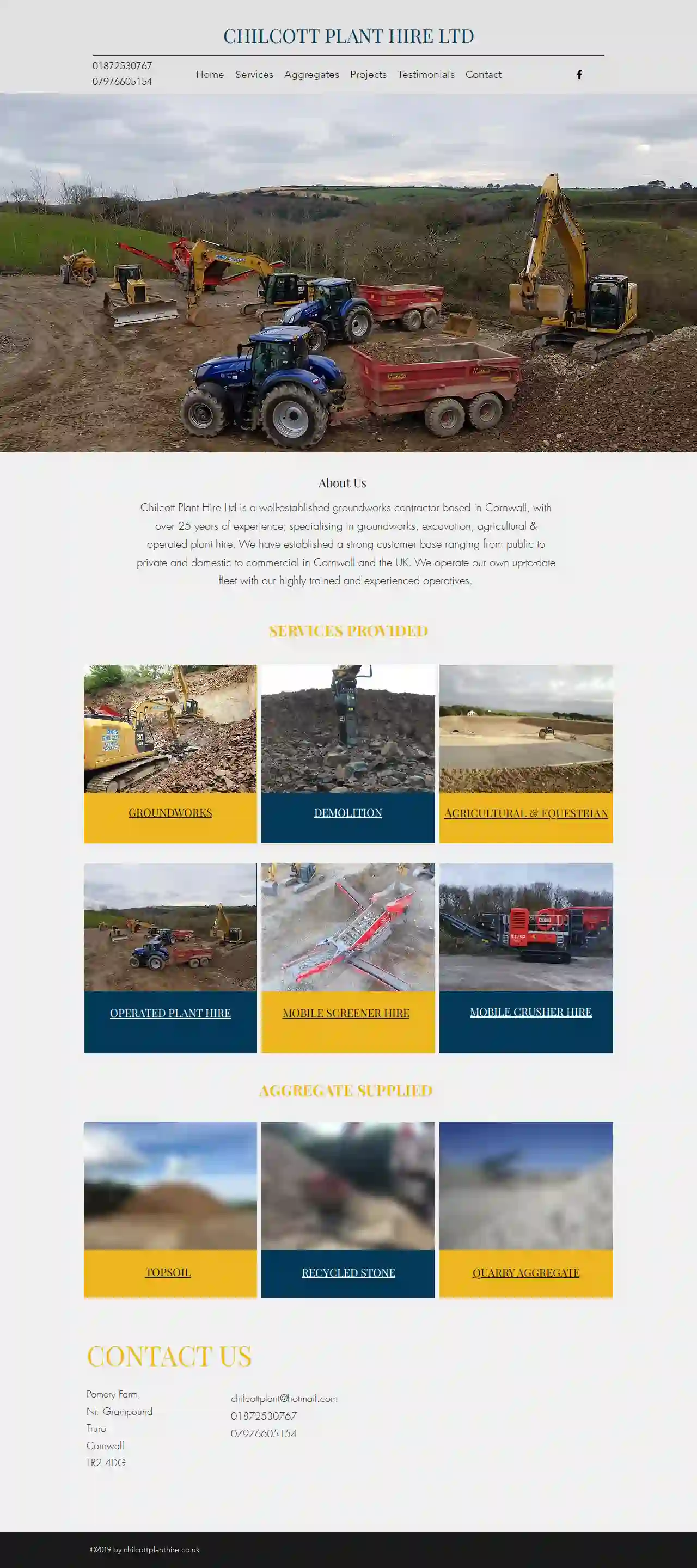
Chilcott Plant Hire and Groundworks Ltd
4.73 reviewsPomery Farm, Nr. GrampoundTruroCornwall, Grampound, TR2 4DG, GBAbout Us Chilcott Plant Hire Ltd is a well-established groundworks contractor based in Cornwall, with over 25 years of experience; specialising in groundworks, excavation, agricultural & operated plant hire. We have established a strong customer base ranging from public to private and domestic to commercial in Cornwall and the UK. We operate our own up-to-date fleet with our highly trained and experienced operatives.
- Services
- Why Us?
- Gallery
Get Quote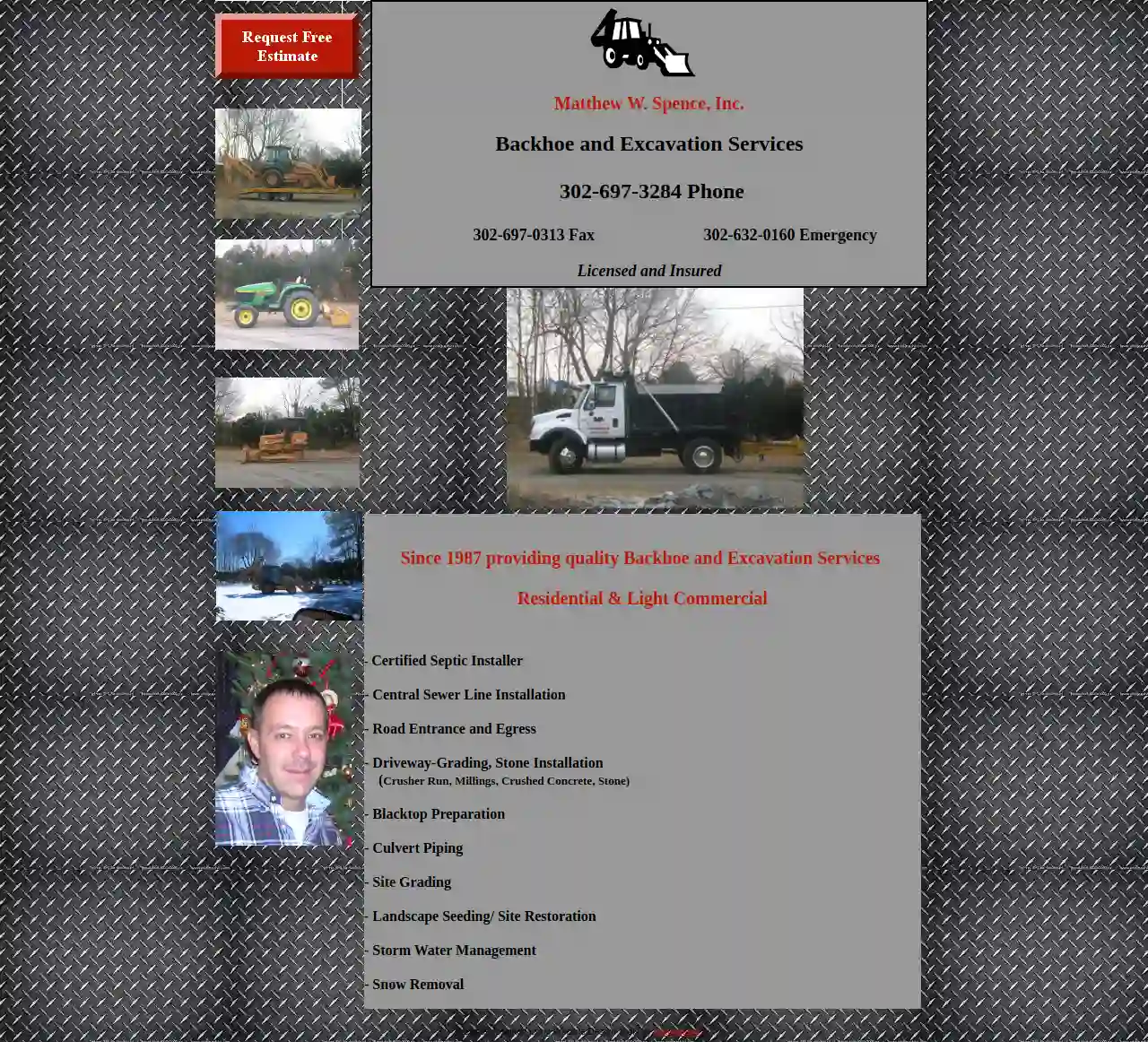
Matthew W Spence Inc
Ely, GBMatthew W. Spence, Inc. - Your Trusted Backhoe and Excavation Experts Since 1987, Matthew W. Spence, Inc. has been a leading provider of high-quality backhoe and excavation services for residential and light commercial clients in the Delaware area. We are committed to delivering exceptional results, exceeding expectations, and building lasting relationships with our customers. Our team of experienced professionals is dedicated to providing personalized service and expert craftsmanship on every project. We understand that your property is an investment, and we treat it with the utmost care and respect. We are fully licensed and insured, and we use only the highest quality materials and equipment to ensure that your project is completed to the highest standards. Whether you need a new driveway, a foundation dug, or a septic system installed, we have the expertise and experience to handle your project from start to finish. We are committed to providing our clients with a seamless and stress-free experience. Contact us today for a free consultation and let us help you bring your vision to life.
- Services
- Why Us?
- Gallery
Get Quote
G&J Groundworks (Jedburgh) Ltd
59 reviews1a Grahamslaw Close High Street Jedburgh, Jedburgh, TD8 6AA, GBLaying the Groundworks Established in 2000, G+J Groundworks has built a strong reputation for delivering a full range of specialist groundwork services. We've achieved this by providing every client with the same attention to detail and exceptional levels of customer service on every single project, ensuring that we deliver a first-class job every time. This combination of quality and commitment means that we enjoy extremely high levels of repeat business and recommendations from our clients, many of whom we have worked with for almost 20 years. Our core business is providing groundwork services for commercial clients and local authorities and we are proud to be a Scottish Borders Council Approved Contractor and are a fully verified company with Acclaim and Construction Line. As experts in all aspects of excavation, drainage and concrete, clients also know that we have the versatility to deliver all of their groundwork requirements. From the preparation of new factory sites and agricultural developments to making sure that new housing development sites are build ready. We have a wealth of experience and would be delighted to introduce you to G+J Groundworks and have the opportunity to discuss your individual requirements with you. For more information or to arrange a meeting, please contact one of the team.
- Services
- Why Us?
- Our Team
- Gallery
Get Quote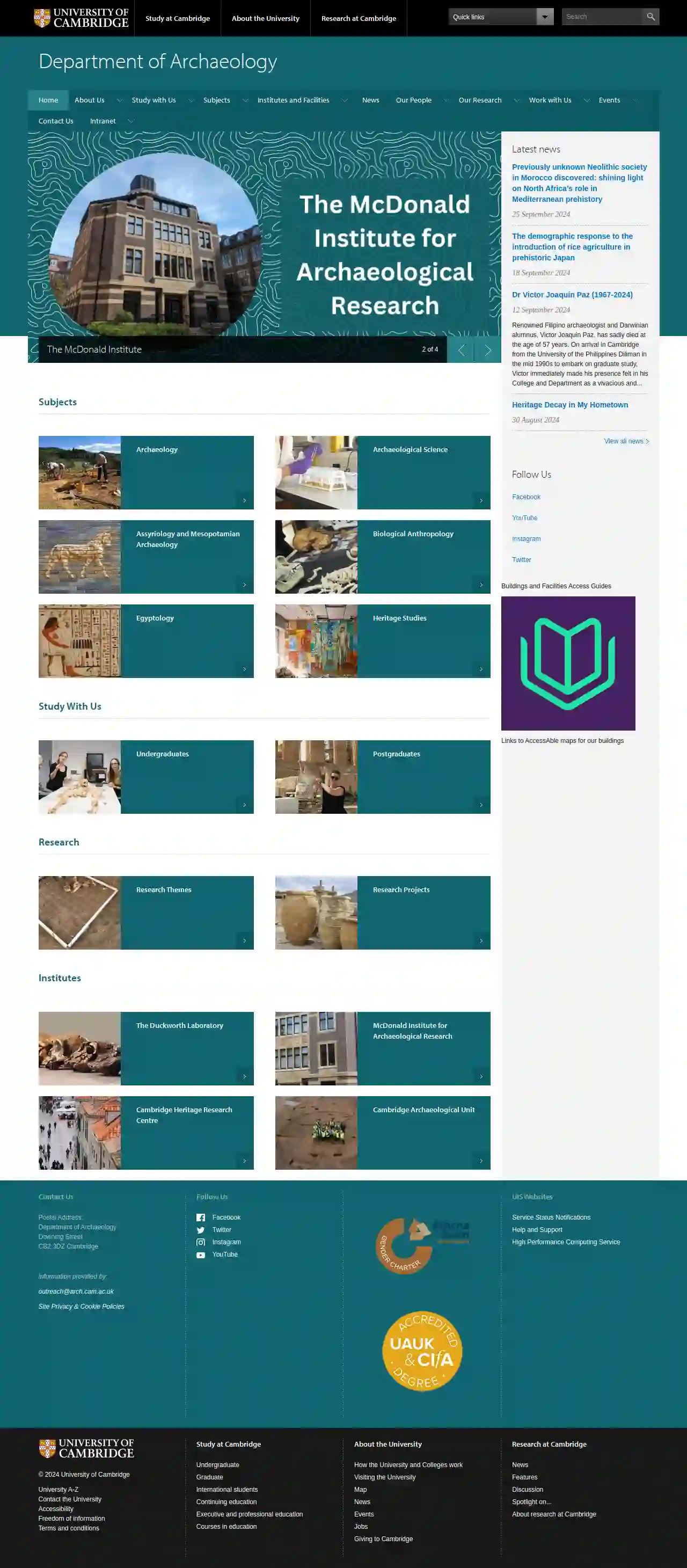
Department of Archaeology, University of Cambridge
41 reviewsDepartment of Archaeology, Downing Street, Cambridge, CB2 3DZ, GBAbout Us The Department of Archaeology at the University of Cambridge is a world-leading centre for archaeological research and teaching. We offer a wide range of undergraduate and postgraduate degrees, as well as a vibrant research environment. Our staff and students are engaged in a diverse range of research projects, from the study of ancient Mesopotamia to the analysis of human evolution. We are committed to excellence in teaching and research, and to making our work accessible to a wider audience. Our Mission Our mission is to advance the understanding of the human past through archaeological research, teaching, and public engagement. We aim to: Conduct world-class archaeological research that addresses fundamental questions about human history and culture. Provide our students with a rigorous and stimulating education in archaeology. Disseminate our research findings to a wider audience through publications, exhibitions, and public lectures. Contribute to the preservation and interpretation of archaeological heritage. Our History The Department of Archaeology was founded in 1921. Since then, we have grown into one of the largest and most prestigious archaeology departments in the world. We have a long and distinguished history of research and teaching, and our alumni have gone on to make significant contributions to the field of archaeology. Our Team Our team is made up of world-leading archaeologists, researchers, and teachers. We are committed to providing our students with a supportive and stimulating learning environment. We also have a strong commitment to diversity and inclusion, and we welcome applications from students from all backgrounds.
- Services
- Why Us?
- Accreditations
- Our Team
- Gallery
Get Quote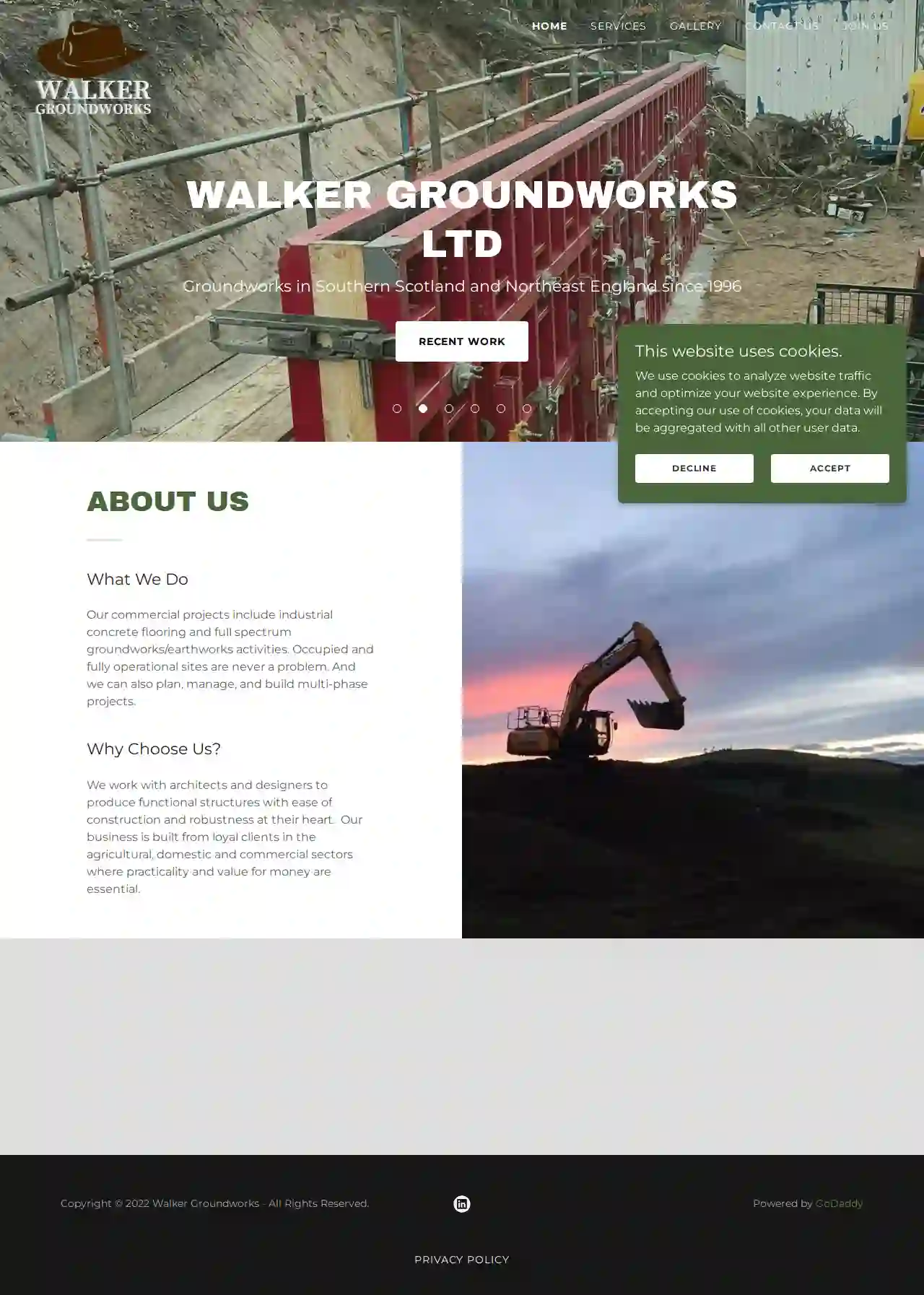
Walker Groundworks Ltd
3.37 reviewsEly, GBWalker Groundworks LTD Walker Groundworks LTD has been providing groundworks services in Southern Scotland and Northeast England since 1996. We specialize in a wide range of services, including industrial concrete flooring, full spectrum groundworks/earthworks activities, and commercial forestry. We work with architects and designers to produce functional structures with ease of construction and robustness at their heart. Our business is built from loyal clients in the agricultural, domestic and commercial sectors where practicality and value for money are essential. We are committed to providing our clients with the highest quality services and workmanship. We have a team of experienced and qualified professionals who are dedicated to meeting your needs. We also use the latest technology and equipment to ensure that our projects are completed on time and within budget. If you are looking for a reliable and experienced groundworks contractor, then please contact us today. We would be happy to discuss your project and provide you with a free quote.
- Services
- Why Us?
- Gallery
Get Quote
S Lamont Contracts
Ely, GBAbout S Lamont Contracts Located in Garvagh, S Lamont Contracts offers expert groundworks and contract services throughout Northern Ireland. Founded in 2015 by Simon Lamont, our company has a team of highly skilled professionals. We are committed to ongoing investment in both equipment and plant resources, enabling us to undertake projects of any scale with confidence. We have worked with many leading companies including McQuillan Companies, DB Contracts, Adman Ltd and OB Construction.
- Services
- Why Us?
- Gallery
Get Quote
Over 13,059+ Excavation Pros on our platform
Our excavation pros operate in Littleport & surrounding areas!
ExcavationHQ has curated and vetted Top Excavation Contractors in Littleport. Find the most reliable pro today.
Frequently Asked Questions About Demolition Contractors
- Safety: Experienced contractors have the knowledge, skills, and safety training to execute demolitions safely, minimizing risks to workers and surrounding areas.
- Efficiency: Contractors have the specialized equipment and expertise to complete demolitions efficiently, saving time and reducing project costs.
- Compliance: Reputable contractors are familiar with local regulations and permitting requirements, ensuring compliance and avoiding legal issues.
- Waste Management: Contractors have waste management plans to handle debris responsibly, including recycling and proper disposal.
- Liability Protection: Insured contractors protect you from financial responsibility for accidents or damages during the demolition process.
What is a demolition bond?
Do I need a permit for demolition?
How can I tell if my building contains asbestos?
What are the benefits of hiring a professional demolition contractor?
What is a demolition bond?
Do I need a permit for demolition?
How can I tell if my building contains asbestos?
What are the benefits of hiring a professional demolition contractor?
- Safety: Experienced contractors have the knowledge, skills, and safety training to execute demolitions safely, minimizing risks to workers and surrounding areas.
- Efficiency: Contractors have the specialized equipment and expertise to complete demolitions efficiently, saving time and reducing project costs.
- Compliance: Reputable contractors are familiar with local regulations and permitting requirements, ensuring compliance and avoiding legal issues.
- Waste Management: Contractors have waste management plans to handle debris responsibly, including recycling and proper disposal.
- Liability Protection: Insured contractors protect you from financial responsibility for accidents or damages during the demolition process.